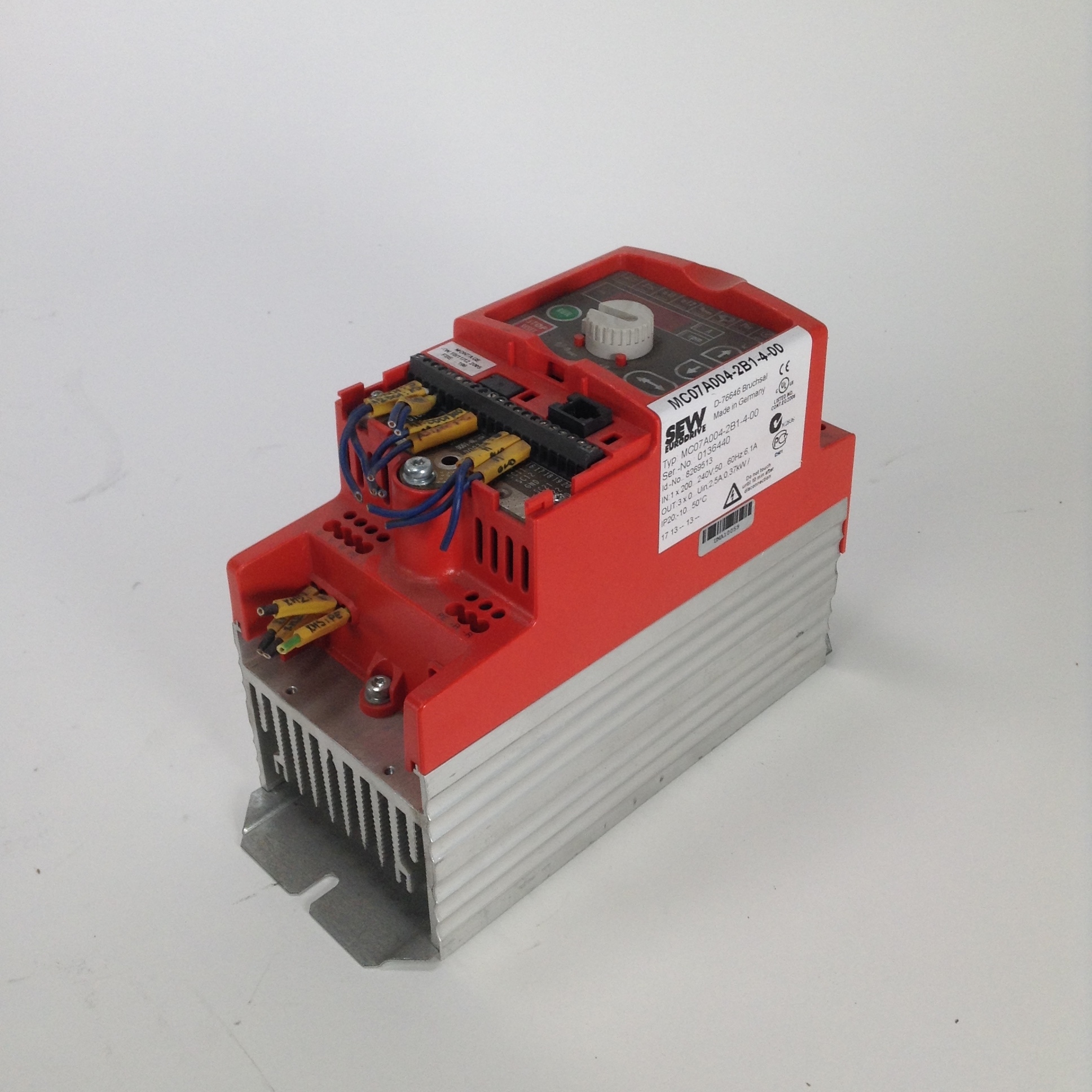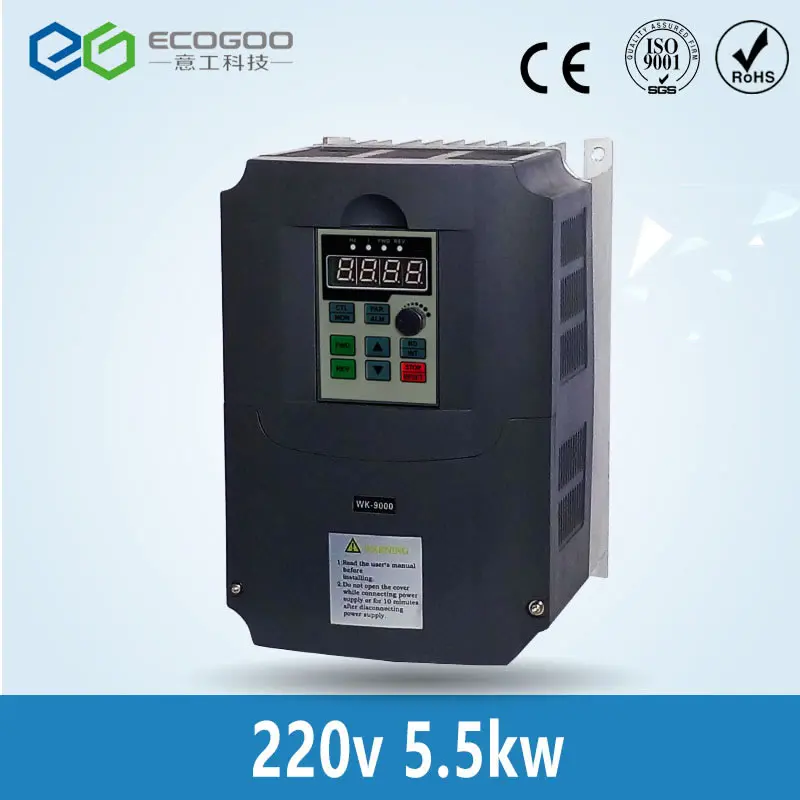You are using an out of date browser. It may not display this or other websites correctly.
You should upgrade or use an alternative browser.
You should upgrade or use an alternative browser.
Thoughts on this VFD
- Thread starter Lewis_RX8
- Start date
Lewis_RX8
Member
- Messages
- 1,566
- Location
- Scotland
I'm going rotary so I see the electricity!
Would be a nice option if I had enough spare motors and room for one

Interesting thread however and following it to see how you get on.
Agroshield
Member
- Messages
- 6,274
Any output phase from the VFD should still be 230VAC with respect to neutral so you can run a single phase device (coolant pump) from that....
At the power station, neutral is connected to earth (ground). No VFD uses the neutral. It is the phase-to-phase voltage we need to make 415v.
What a VFD does is to take the incoming supply, rectify it to DC and then using a microprocessor to control IGBTs chop it up again into approximations of AC sine waves 120 degrees apart*. For 415v output from 230v input, you'd need a voltage step-up stage (boost) between rectifier and IGBT. You can buy 230v in and 415v out VFDs but they are not common and are expensive - Look at Drives Direct in the UK for info.
* Even 415v 3-phase in and 415v 3-phase out ones work this way, except they use a 3-phase rectifier. Many 230v VFDs are also made for 3-phase input but in UK our power is not supplied in that manner.
Ubique
Member
- Messages
- 2,353
- Location
- East Midlands
Not a VFD but solar panel inverters are quite common in 415V three phase configuration, obviously they don't have the variable frequency ability though.
The VFD 'has' to use the neutral (functional earth/ground) as a reference voltage - and of course as an input 'leg' but as it's nominally 0V, clearly it doesn't process it. I remember installing motor control inverters on a food production line to run the conveyor belts in the '90's, they were quite a new thing (to us) then and I remember them being single phase in, 415V three phase out, at the time, I wondered what sort of witchcraft was inside the box! So I don't think it's that unusual, possibly they are outside of the pricing envelope for non-commercial users....
The VFD 'has' to use the neutral (functional earth/ground) as a reference voltage - and of course as an input 'leg' but as it's nominally 0V, clearly it doesn't process it. I remember installing motor control inverters on a food production line to run the conveyor belts in the '90's, they were quite a new thing (to us) then and I remember them being single phase in, 415V three phase out, at the time, I wondered what sort of witchcraft was inside the box! So I don't think it's that unusual, possibly they are outside of the pricing envelope for non-commercial users....
daleyd
Member
- Messages
- 10,497
- Location
- Wrexham, North Wales
You won’t get a neutral on the output side of a vfd, just the 3 phases.
I’ve no idea what would happen if you connected one of these phases through a single phase motor and onto a neutral connection, I’ve never tried it. Where you would run into problems is if you wanted to use the speed control of the vfd, at anything other (below) than 50 hz they will reduce the voltage, there is a relationship between frequency and voltage that they produce to maintain a 3 phase motors ideal operating state. If they produced 240v at all speeds then the motors wouldn’t operate correctly at lower speeds.
I’ve no idea what would happen if you connected one of these phases through a single phase motor and onto a neutral connection, I’ve never tried it. Where you would run into problems is if you wanted to use the speed control of the vfd, at anything other (below) than 50 hz they will reduce the voltage, there is a relationship between frequency and voltage that they produce to maintain a 3 phase motors ideal operating state. If they produced 240v at all speeds then the motors wouldn’t operate correctly at lower speeds.
daleyd
Member
- Messages
- 10,497
- Location
- Wrexham, North Wales
The input stage needs it, but the output side is completely separate - as agroshield says above it’s converted to a dc bus voltage and the 3 phase out is recreated “digitally”, but the neutral isn’t passed through. On a 3 phase input vfd you won’t see a neutral (I can’t recall seeing a drive where one needs connecting), it only needs 3 phases in.To be honest, the only time I can recall seeing a neutral on a three-phase motor was for the anti-condensation heater, and that had a separate phase connection too (obviously!) but a VFD must use it internally as a reference voltage
Ubique
Member
- Messages
- 2,353
- Location
- East Midlands
This has piqued my interest, I've just found this for a Siemens V20, which can take either 1ph or 3ph input, the quick-start guide suggests the output voltage is switchable to suit the motor - which would be ideal if you want to have three-phase sockets or equipment hardwired to a three-phase DB without needing frequency variation.
Lewis_RX8
Member
- Messages
- 1,566
- Location
- Scotland
This has piqued my interest, I've just found this for a Siemens V20, which can take either 1ph or 3ph input, the quick-start guide suggests the output voltage is switchable to suit the motor - which would be ideal if you want to have three-phase sockets or equipment hardwired to a three-phase DB without needing frequency variation.
Ah yes thats what Im wanting
Shame it comes with a siemens price tag
daleyd
Member
- Messages
- 10,497
- Location
- Wrexham, North Wales
The 1phase or 3 phase input are different inverters (ie when you order it you specify which), the manual is for both. On some you can use a single phase input on a 3 phase inverter but you have to derate the output, but I’m not sure if this is one of them. For sure you absolutely will not get 400v out of a single phase 230v in vfd unless it specifically states that - those that do will have a step up transformer inside and are quite expensive normally.This has piqued my interest, I've just found this for a Siemens V20, which can take either 1ph or 3ph input, the quick-start guide suggests the output voltage is switchable to suit the motor - which would be ideal if you want to have three-phase sockets or equipment hardwired to a three-phase DB without needing frequency variation.
The rated motor voltage is important because the drive needs to know this to work out the volts/frequency ratio - so that at 50 hz it’s giving the correct volts out
Ubique
Member
- Messages
- 2,353
- Location
- East Midlands
Yep, I appreciate they're different models and it's a composite quick start guide, I'll see if I can find the specific setup for the single phase input one.
Do they really have transformers? I would have thought the output drivers would just be rated for a higher voltage - like the solar power three-phase inverters.
Do they really have transformers? I would have thought the output drivers would just be rated for a higher voltage - like the solar power three-phase inverters.
daleyd
Member
- Messages
- 10,497
- Location
- Wrexham, North Wales
How are you going to get the higher voltage out from 230v in? The transformer is required to boost the incoming voltage to a level where the rectified dc voltage is high enough to give 400v out. The output transistors are most likely all the same rating for 230 or 400v operation (I would think it’s cheaper to use 1 common component, but maybe they do use lower rated for 230v operation, I’m only guessing?), it’s the dc bus voltage that’s the limiting factor.Yep, I appreciate they're different models and it's a composite quick start guide, I'll see if I can find the specific setup for the single phase input one.
Do they really have transformers? I would have thought the output drivers would just be rated for a higher voltage - like the solar power three-phase inverters.
Ubique
Member
- Messages
- 2,353
- Location
- East Midlands
Solar power inverters do it all the time - 12VDC to 230/415VDC is it not simply a conversion of power? I know there's a lot more to the solar power inverters, not least synchronising of waveforms and much better smoothing, along with the ability to run asymmetric loads, and for that there is a massive price difference but using an electronic device to generate a higher voltage than the input isn't that unusual - ask anyone that's been tasered!
daleyd
Member
- Messages
- 10,497
- Location
- Wrexham, North Wales
Powering something that requires a constant power drain (like a motor) is, I guess, a bit different to pumping some power into a grid. If you boost the voltage by some means* (either by transformer or electronics) then you will not get the same amps out that you put in. It’s like a welder - put 13 amps in at 230v and you’ll get out ~ 200amps but at 20v. (I’m taking a stab in the dark at figures there but the principal is you have to reduce one to compensate for the other).Solar power inverters do it all the time - 12VDC to 230/415VDC is it not simply a conversion of power? I know there's a lot more to the solar power inverters, not least synchronising of waveforms and much better smoothing, along with the ability to run asymmetric loads, and for that there is a massive price difference but using an electronic device to generate a higher voltage than the input isn't that unusual - ask anyone that's been tasered!
So, yeah they could do it that way, but they don’t. On pretty much every vfd I’ve worked with the output voltage is pegged at the input voltage. That’s just the way they are, unless you go for the (fairly uncommon and expensive) voltage boosting types. If you find different I’m happy to be corrected but it’s not something I’m familiar with.
daleyd
Member
- Messages
- 10,497
- Location
- Wrexham, North Wales
Here are pictures of 2 vfd I have sitting on my desk, a Siemens micromaster and a Mitsubishi. The Siemens can take single or 3 phase 240v the Mitsubishi is single phase only 240v. On both you will notice the v out is only the same as v in.


Onoff
In the land of the unfinished project I am King!
- Messages
- 12,906
- Location
- Sevenoaks, UK
I'm a big fan of SEW drives. Really impressed with their longevity. Use them at work and I'm reasonably proficient and setting them up using Movitools.
You can pick the "A" (obsolete) models up s/hand quite reasonably off the likes of eBay. Just an example.

 www.maxodeals.com
www.maxodeals.com
I recently ordered a s/hand, obsolete model for work from Poland or Hungary (can't remember). Got the client going with no wiring changes, just dumped the parameter set into the "new" one, then had the original repaired.
A few places in the UK who will repair them but it's not exactly cheap to do so unfortunately.
You can pick the "A" (obsolete) models up s/hand quite reasonably off the likes of eBay. Just an example.

Sew Eurodrive MC07A004-2B1-4-00 Movitrac frequency converter umrichter Used UMP
Sew Eurodrive MC07A004-2B1-4-00 Movitrac frequency converter umrichter Used UMP
I recently ordered a s/hand, obsolete model for work from Poland or Hungary (can't remember). Got the client going with no wiring changes, just dumped the parameter set into the "new" one, then had the original repaired.
A few places in the UK who will repair them but it's not exactly cheap to do so unfortunately.
Ubique
Member
- Messages
- 2,353
- Location
- East Midlands
I guess we're looking at the same equation (P=IV) from different sides, there's always conversion losses, even on a rotary generator, I know that, I find it hard to believe that something that to my mind, is relatively simple, and *should* be commonplace, just isn't. Of course, you can have anything you want if you're prepared to pay for it, the parts of the world you'd think would be crying out for cheap versions already have three-phase pretty much everywhere there is electricity anyway.Here are pictures of 2 vfd I have sitting on my desk, a Siemens micromaster and a Mitsubishi. The Siemens can take single or 3 phase 240v the Mitsubishi is single phase only 240v. On both you will notice the v out is only the same as v in.
daleyd
Member
- Messages
- 10,497
- Location
- Wrexham, North Wales
Yeah It’s not conversion losses though, like you said it’s p=iv.I guess we're looking at the same equation (P=IV) from different sides, there's always conversion losses, even on a rotary generator, I know that, I find it hard to believe that something that to my mind, is relatively simple, and *should* be commonplace, just isn't. Of course, you can have anything you want if you're prepared to pay for it, the parts of the world you'd think would be crying out for cheap versions already have three-phase pretty much everywhere there is electricity anyway.
The simplest way to boost voltage is using a transformer, I’d be surprised if solar inverters didn’t use a transformer in some capacity, though I know nothing about how they operate so maybe they don’t? I think that pretty much all the voltage boosting vfd use a transformer on the input stage though. It’s relatively cheap and robust, I think the expense over a standard 1ph-3ph vfd comes from the fact they don’t sell that many. If you can run your motor on 230v then there’s really little need, and once you get to bigger sizes (>2.2kw) most use a 3 phase input anyway so they have quite a limited market.
Lewis_RX8
Member
- Messages
- 1,566
- Location
- Scotland
this one looks like it may be what I'm after ,Seems to be measuring these between phases on the VFD at 390v ?
The description shows this vfd

5.5KW VSD 220v to 380v Spindle Inverters VFD AC drive frequency converter Factory Direct Sales - AliExpress 13
Smarter Shopping, Better Living! Aliexpress.com




